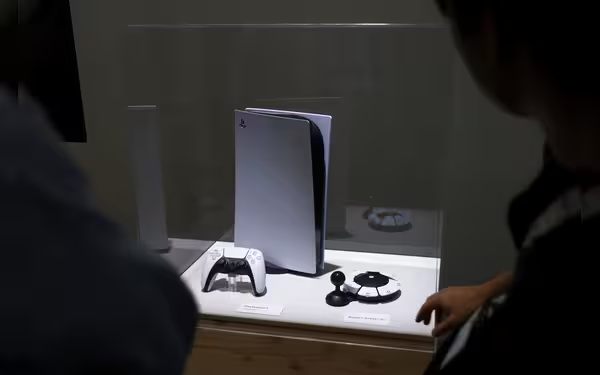Saturday, November 16, 2024 07:53 PM
Sony Chooses AMD Over Intel for PlayStation 6 Development
- Sony partners with AMD for PS6 chip design.
- Backward compatibility prioritized for PS6.
- Intel's profit-sharing disputes led to rejection.
 Image Credits: mashable_me
Image Credits: mashable_meSony opts for AMD over Intel for PlayStation 6, focusing on backward compatibility and enhancing user experience.
In the ever-evolving world of gaming, the anticipation surrounding the next-generation console, the PlayStation 6 (PS6), is palpable. Following the recent announcement of the PS5 Pro, which did not receive the enthusiastic response Sony had hoped for, the focus has swiftly shifted to what the PS6 might offer. As gamers eagerly await more details, a significant development has emerged regarding the console's design.
Reports indicate that Sony has opted to collaborate with AMD for the PS6's chip design, marking a notable decision in the competitive landscape of gaming technology. This choice is particularly interesting given the previous partnership dynamics between Sony and Intel. The primary reason for this shift appears to be the emphasis on backward compatibility, a feature that has become increasingly important to gamers.
Backward compatibility allows players to enjoy games from previous console generations on the new system. Sony learned a valuable lesson from the launch of the PS4 in 2013, which disappointed many fans due to its lack of native backward compatibility with the PS3. This oversight left a sour taste in the mouths of loyal customers, and Sony is keen to avoid repeating such a mistake with the PS6.
Insiders have revealed that ensuring a seamless gaming experience between the PS6 and its predecessor was a top priority for Sony. The company is determined to maintain the goodwill it has built with its user base, especially after addressing backward compatibility with the PS5. The decision to partner with AMD, which has a proven track record in chip design, particularly for Microsoft’s Xbox, seems to be a strategic move to ensure a smooth transition for gamers.
Interestingly, the agreement with AMD has reportedly been in place since at least 2022, indicating that Sony has been planning this transition for some time. On the other hand, tensions with Intel arose from disputes over profit-sharing, with Intel seeking a larger share of the profits per chip sold. While an Intel spokesperson refrained from commenting on the negotiations, they did push back against the notion that Intel “failed” to secure the contract.
Had the deal with Intel materialized, it could have potentially brought in upwards of $30 billion for the company. However, the established relationship between Sony and AMD, coupled with AMD’s experience in the gaming sector, likely made the decision to stick with AMD a more appealing option for Sony.
As the gaming community looks forward to the PS6, it is clear that Sony is taking significant steps to ensure that the next console meets the expectations of its users. The focus on backward compatibility is a promising sign that the company is listening to its fans and learning from past experiences. Ultimately, the success of the PS6 will depend not only on its hardware but also on how well it resonates with the gaming community. As we await further announcements, one thing is certain: the competition in the gaming industry is heating up, and gamers are in for an exciting ride.












